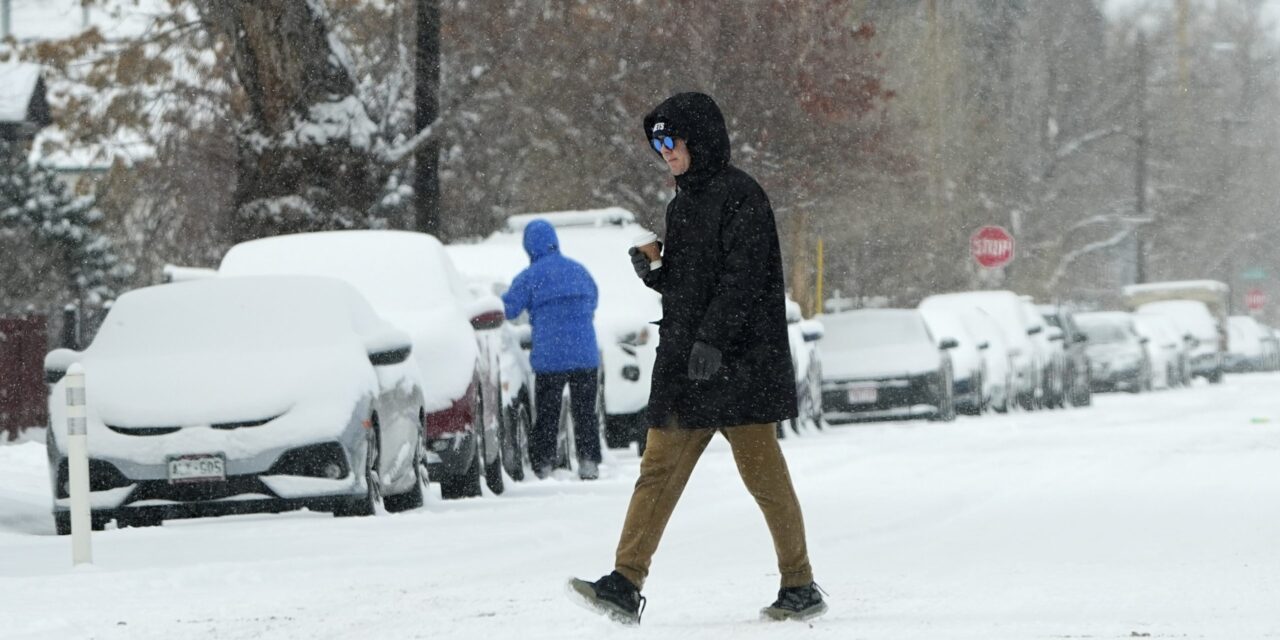This article is from: srnnews.com
BOSTON (AP) — Tens of millions of residents along the East Coast are bracing for several inches of snow Sunday followed by dangerously cold temperatures that will take hold in much of the country from the Northern Plains to the tip of Maine.
Winter storm warnings issued by the National Weather Service have already gone into effect for parts of the Mid-Atlantic through Monday morning, with the forecast projecting up to a half-foot (15 centimeters) of snow. Warnings will begin in New England on Sunday afternoon, with parts of Massachusetts, New Hampshire, Maine and Connecticut seeing as much as 10 inches (25 centimeters) of snow.
Marc Chenard, a meteorologist with the National Weather Service in College Park Maryland, projected that as many as 70 million residents will be under some kind of winter storm hazards warning in the coming days including in New England and the Mid-Atlantic. Large cities like Philadelphia, New York and Boston could see several inches of snow this evening with the highest totals being outside of major cities.
“There will certainly be some more hazardous road conditions anywhere from D.C. up the whole I-95 corridor and then inland from there later today and tonight,” Chenard said. “Then it gets quite cold behind that. By Monday morning, any roads that haven’t been treated or cleared will still likely be some hazardous travel conditions.”
But the snow is just the start of a chaotic week of weather.
Much of the Eastern half of the United States will be enduring some of the coldest temperatures this winter, if not for several years.
An area from the Rockies into the Northern Plains will see colder than normal temperatures starting Sunday into the coming week, with temperatures dropping to minus 30 degrees F (minus 34 degrees C) to minus 55 F (minus 48 C) on Sunday and Monday. Wind chills of minus 40 F (minus 40 C) were already being clocked in parts of North Dakota and Minnesota. Sub-zero wind chills are forecast to reach as far south as Oklahoma and the Tennessee Valley.
The cold weather forecasted for Monday for Washington, D.C., prompted President-elect Donald Trump’s inaugural ceremony to be moved inside the U.S. Capitol Rotunda.
“It’s going to be a cold day in Washington, D.C. on Monday. That’s for sure,” Chenard said, noting temperatures will be in the 20s with wind gust upwards of 30 mph (48 kph).
As happened earlier this month, this latest cold snap comes from a disruption in the polar vortex, the ring of cold air usually trapped about the North Pole.
The cold air will moderate as it moves southward and eastward, but the Central and Eastern U.S. will still be cold with highs in the teens and 20s on Monday into Tuesday, Chenard said. The Mid-Atlantic and Northeast also will have highs in the teens and 20s, lows in the single digits and below zero degrees F (minus 18 C) and wind chills below zero.
The colder temperatures will reach down into the South early this week, where as many as 30 million people starting Monday could see a wintry mix of snow, sleet and freezing rain. The unusual conditions are expected to stretch from Texas into northern Florida and the Carolinas. Impacts are expected to start in Texas on Monday night and spread across the Gulf Coast and Southeast on Tuesday into Wednesday.
A combination of frigid air with a low pressure system over the Gulf are behind the storm, which could bring heavy snow just south of the Interstate 20 corridor across northern Louisiana and into Mississippi and a mix of snow, sleet, and freezing rain near the Interstate 10 corridor from Houston to Mobile, Alabama.
Louisiana Gov. Jeff Landry on Saturday issued a state of emergency in advance of the wintry weather. He encouraged Louisianans to be prepared and to monitor the weather forecast.
___
Julie Walker contributed to this report from New York. She can be reached at https://x.com/jwalkreporter.
Brought to you by www.srnnews.com






